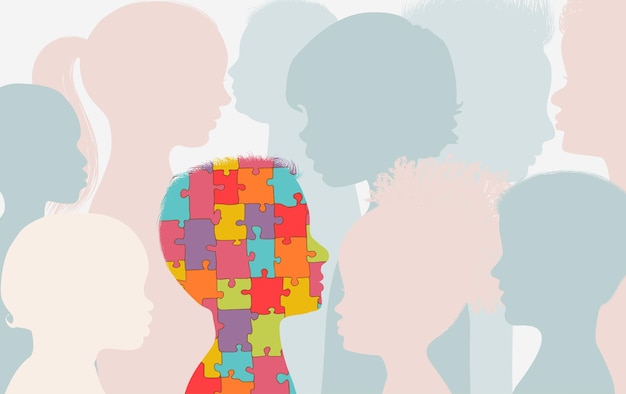For individuals with higher-functioning autism, the challenges of daily living can be overwhelming. From maintaining a regular schedule to managing personal care and household tasks, the demands of day-to-day life can be difficult to navigate. But with the rise of next-generation home automation tools, there is now a glimmer of hope for those who struggle with independence. These advanced tools are designed to simplify and streamline everyday tasks, making them more manageable for individuals on the autism spectrum. From smart home assistants to automated lighting and temperature control, these tools are revolutionizing the way we live our lives. And for those with autism, they may be the key to achieving a level of independence that was once thought impossible.
Understanding the Needs of Higher-Functioning Autistics
Before diving into the benefits of home automation for higher-functioning autistics, it’s important to understand the unique challenges they face. Individuals with higher-functioning autism may struggle with social interaction, communication, and sensory processing. This can make it difficult to navigate unfamiliar environments, follow a routine, or complete tasks that require multiple steps. Additionally, they may have difficulty with executive functioning skills, such as planning, organizing, and prioritizing tasks.
These challenges can make everyday tasks, like getting dressed, cooking a meal, or even turning on the lights, feel overwhelming. As a result, many individuals with autism rely on the support of caregivers or family members to complete these tasks. While this can be helpful, it can also limit their independence and ability to live a fulfilling life.
Benefits of Home Automation for Higher-Functioning Autistics
This is where home automation tools come in. By automating everyday tasks, individuals with autism can gain a greater sense of control and independence. For example, a smart home assistant like Amazon’s Alexa or Google Home can be programmed to turn on lights, adjust the temperature, or play music with a simple voice command. This eliminates the need for complex set-up and allows for greater flexibility in completing tasks.
Automated lighting and temperature control can also be game-changers for individuals with autism. These tools can be programmed to adjust based on the time of day, preferred settings, or even the individual’s mood. This can be especially helpful for those with sensory processing difficulties, who may be sensitive to bright lights or extreme temperatures.
Another benefit of home automation is the ability to create routines and schedules. Many individuals with autism thrive on routine and structure, and home automation tools can help to create a consistent and predictable environment. For example, automated blinds can be programmed to open and close at specific times of day, while a smart lock can be set to automatically lock or unlock at certain times.
How Home Automation Tools Work
Home automation tools work by connecting different devices and systems within the home, allowing them to communicate and function together. This is typically done through a central hub or controller, which acts as the “brain” of the system. The hub can be programmed to respond to specific triggers, such as a voice command or a motion sensor, and can then activate different devices accordingly.
Many home automation tools also utilize machine learning and AI technology, which allows them to adapt and learn from user behavior over time. This means that the system can become more personalized and intuitive as it learns the individual’s preferences and habits.
Examples of Home Automation Tools for Higher-Functioning Autistics
There is a wide range of home automation tools available on the market, each with its own unique features and benefits. Some popular examples include:
- Smart home assistants, like Amazon’s Alexa or Google Home, can be programmed to control various devices and systems within the home.
- Automated lighting and temperature control systems, like Philips Hue or Nest, can be programmed to adjust based on the time of day, preferred settings, or user behavior.
- Smart locks, like August or Schlage, can be controlled remotely and programmed to automatically lock or unlock at specific times.
- Automated blinds or curtains, like Lutron or Somfy, can be programmed to open and close at specific times or in response to certain triggers.
Features to Consider When Choosing Home Automation Tools
When choosing home automation tools for higher-functioning autistics, it’s important to consider the individual’s unique needs and preferences. Some features to look for might include:
- Voice control: Many individuals with autism may struggle with fine motor skills or complex interfaces, making voice control an ideal option.
- Customization: Look for systems that allow for customization based on individual preferences and needs.
- Compatibility: Make sure the devices you choose are compatible with each other and can be controlled through a central hub or controller.
- Ease of use: The system should be easy to set up and use, with intuitive interfaces and clear instructions.
Integrating Home Automation Tools with Therapy and Education
Home automation tools can also be a valuable tool for therapy and education for individuals with autism. For example, a smart home assistant can be used to practice social skills or language development, while automated routines can help to reinforce daily living skills.
Additionally, home automation tools can be used to create a safe and predictable environment for individuals with autism, which can be especially helpful during times of stress or change. For example, a smart lock can provide added security and peace of mind, while automated lighting can help to create a calming and soothing environment.
Cost-Effective Home Automation Options
While some home automation tools can be expensive, there are also many cost-effective options available. For example, smart plugs can be purchased for as little as $10 and can be used to control various devices within the home. Additionally, many smart home assistants, like Amazon’s Alexa or Google Home, can be purchased for under $100.
Success Stories of Home Automation for Higher-Functioning Autistics
There are many success stories of individuals with autism who have benefited from home automation tools. For example, one family reported that their son, who had previously relied on caregivers for many daily tasks, was able to gain a greater sense of independence and autonomy with the help of a smart home assistant. Another individual reported that automated lighting and temperature control helped to create a more comfortable and predictable environment, reducing stress and anxiety.
Future of Home Automation for Higher-Functioning Autistics
As technology continues to advance, the possibilities for home automation tools are endless. In the future, we may see even more personalized and intuitive systems, with the ability to adapt and learn from user behavior in real-time. Additionally, home automation tools may become even more integrated with therapy and education, providing new opportunities for learning and growth.
For individuals with higher-functioning autism, home automation tools can be a game-changer. By automating everyday tasks, these tools can provide a greater sense of control and independence, allowing individuals to live a more fulfilling and autonomous life. From smart home assistants to automated lighting and temperature control, there is a wide range of tools available, each with its own unique benefits and features. When choosing home automation tools for higher-functioning autistics, it’s important to consider the individual’s unique needs and preferences, as well as the potential benefits of therapy and education. As technology continues to advance, the future of home automation looks brighter than ever before.



